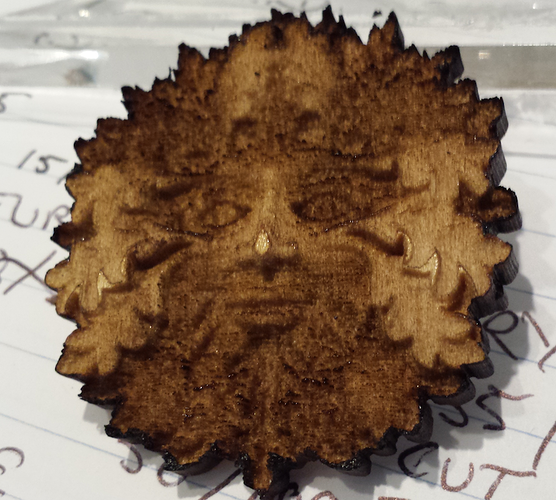I think wood might be a better medium. Downloaded a Green Man from thingiverse and converted to depth map:
You can see the goop that accumulates downwind. Used two slower passes for depth, then one fast pass to clean off the char. Then a cut that was just a bitmap trace outline, outset by an approximation of kerf.
